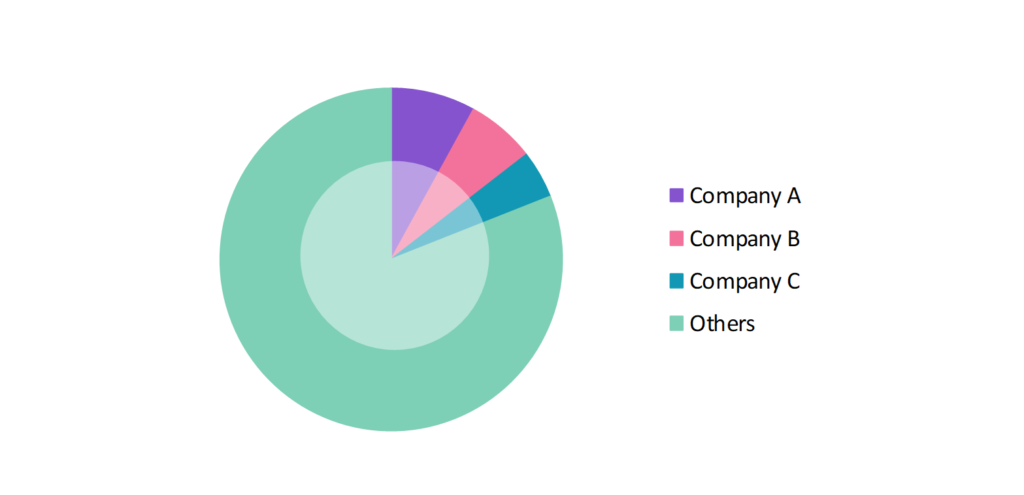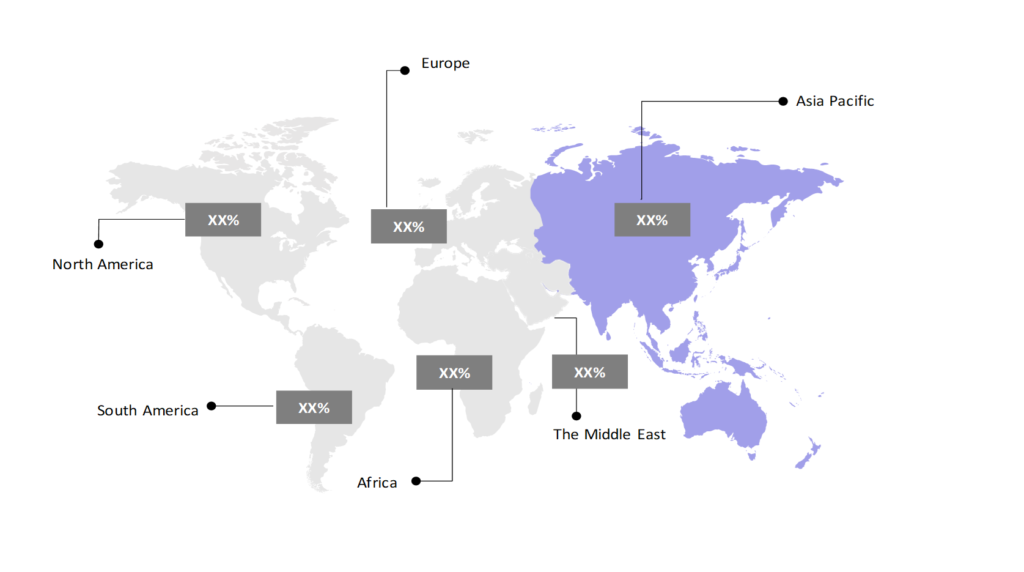Apparel Market: Size, Share, Trends & Forecast (2024-2029)
The market report provided a comprehensive analysis segmented by Type (Formal wear, Casual Wear, Sports Wear, Nightwear, Others); by Product (Shirts, Pants, T-shirts, Skirts, Blouses, Others); by Distribution Channel (Wholesalers, Retailers, Online stores, Supermarkets, Others); by Geography (North America, South America, Asia Pacific, Europe, The Middle East, Africa).
Market Dimensions & Growth Potential

- The apparel market is estimated to be at USD 26,632.73 Mn in 2024 and is anticipated to reach USD 50,256.42 Mn in 2029.
- The apparel market is registering a CAGR of 13.54% during the forecast period of 2024-2029.
- The apparel market is experiencing robust growth driven by evolving consumer preferences for fashion and sustainability, coupled with advancements in technology and innovation.
Request a free sample.
Competitive Landscape & Market Positioning in 2023

- Global apparel industry participants always develop strategies to preserve a competitive advantage.
- These companies primarily use acquisitions, R&D, partnerships, and technological launches.
- Several important entities in the apparel market include PVH Corp.; Nike Inc.; H&M Group; Adidas AG; Inditex and others.
Ask for customization.
Report Objectives & Insights
| Attributes | Values |
| Historical Period | 2018-2022 |
| Base Year | 2023 |
| Forecast Period | 2024-2029 |
| Market Size (2024) | USD 26,632.73 Mn |
| Market Size (2029) | USD 50,256.42 Mn |
| Growth Rate | 13.54% CAGR from 2024 to 2029 |
| Key Segments | Type (Formal wear, Casual Wear, Sports Wear, Nightwear, Others); Product (Shirts, Pants, T-shirts, Skirts, Blouses, Others); Distribution Channel (Wholesalers, Retailers, Online stores, Supermarkets, Others); Geography (North America, South America, Asia Pacific, Europe, The Middle East, Africa) |
| Key Vendors | PVH Corp.; Nike Inc.; H&M Group; Adidas AG; Inditex |
| Key Countries | The US; Canada; Brazil; Mexico; China; India; Japan; Australia; South Korea; The UK; Germany; France; Spain; Turkey; UAE; Saudi Arabia |
| Largest Market | Asia Pacific |
Get a free quote.
Market Trends & Future Outlook
- Augmented Reality (AR) Technology: Augmented reality (AR) technology rapidly expands across various sectors, enhancing user experiences through immersive, interactive applications. AR is trending in retail, real estate, and education by offering innovative ways to visualize products, engage customers, and facilitate learning.
- The Rise of Slow Fashion: Slow fashion is gaining traction. It emphasizes quality, durability, and timeless design over fast fashion’s focus on inexpensive, disposable items. Consumers seek comfortable, versatile clothing for active and everyday use, as well as personalized and customizable options.
- Evolving Trends in Athleisure: Athleisure is evolving with a focus on sustainability, featuring eco-friendly materials and ethical production. Technological advancements enhance functionality, while high-fashion elements and inclusivity expand its appeal. Gender-neutral designs are also gaining traction, making athleisure a versatile staple for modern wardrobes.
Speak to analyst.
Key Market Influencers & Growth Drivers
- Consumer Influence: The growth of the apparel market is profoundly influenced by consumer preferences, which are shaped by an array of factors, including fashion trends, shifts in lifestyles, and cultural influences. These elements collectively dictate the demand for specific clothing styles, designs, and brands.
- Fashion Trends and Innovation: Fashion trends and design innovation drive consumer excitement and demand for new clothing collections. For instance, in September 2022, Myntra launched a sustainable clothing line using innovative technology and processes to bring exciting styles for ‘Here and Now’ in partnership with Fairtrade.
- Government Support and Initiatives: Government initiatives to advance the textile and garment industries are pivotal in driving apparel market growth. For example, India’s Production Linked Incentive (PLI) scheme provides financial incentives to companies and emphasizes technological innovations and sustainability practices in textile production.
Inquire before buying.
Market Obstacles & Growth Barriers
- Supply Chain Disruptions: The apparel industry relies on intricate global supply chains that involve various stakeholders, ranging from raw material suppliers to manufacturers and retailers. Disruptions such as natural calamities, trade disputes, and geopolitical tensions can potentially interrupt the seamless flow of materials, resulting in delays, heightened costs, and inventory shortages.
- Counterfeiting Issues: Counterfeiting and intellectual property theft present notable hurdles for apparel brands, particularly those boasting robust brand equity and instantly recognizable logos or designs. Counterfeit goods translate to lost sales and dilution of brand value, engendering distrust among consumers and tarnishing brand reputation.
- Challenges in Adapting to Market Shifts: Failing to adapt to market changes leads to outdated products and lower sales. Rising production costs, especially in expensive or regulated areas, affect profits. Balancing cost-saving with ethical and sustainable practices is a significant challenge.
Personalize this research.
Map Highlighting Key Region in 2023

Explore purchase options.
Table of Contents
| 1. Introduction |
|---|
| 1.1. Research Methodology |
| 1.2. Scope of the Study |
| 2. Market Overview / Executive Summary |
| 2.1. Global Apparel Market (2018 – 2022) |
| 2.2. Global Apparel Market (2023 – 2029) |
| 3. Market Segmentation |
| 3.1. Global Apparel Market by Type |
| 3.1.1. Formal wear |
| 3.1.2. Casual Wear |
| 3.1.3. Sports Wear |
| 3.1.4. Nightwear |
| 3.1.5. Others |
| 3.2. Global Apparel Market by Product |
| 3.2.1. Shirts |
| 3.2.2. Pants |
| 3.2.3. T-shirts |
| 3.2.4. Skirts |
| 3.2.5. Blouses |
| 3.2.6. Others |
| 3.3. Global Apparel Market by Distribution Channel |
| 3.3.1. Wholesalers |
| 3.3.2. Retailers |
| 3.3.3. Online stores |
| 3.3.4. Supermarkets |
| 3.3.5. Others |
| 4. Regional Segmentation |
| 4.1. North America |
| 4.1.1. The US |
| 4.1.2. Canada |
| 4.1.3. Mexico |
| 4.2. South America |
| 4.2.1. Brazil |
| 4.2.2. Argentina |
| 4.2.3. Colombia |
| 4.2.4. Chile |
| 4.2.5. Rest of South America |
| 4.3. Asia Pacific |
| 4.3.1. China |
| 4.3.2. India |
| 4.3.3. Japan |
| 4.3.4. South Korea |
| 4.3.5. Rest of Asia Pacific |
| 4.4. Europe |
| 4.4.1. The UK |
| 4.4.2. Germany |
| 4.4.3. Italy |
| 4.4.4. France |
| 4.4.5. Spain |
| 4.4.6. Rest of Europe |
| 4.5. The Middle East |
| 4.5.1. Turkey |
| 4.5.2. UAE |
| 4.5.3. Saudi Arabia |
| 4.5.4. Rest of the Middle East |
| 4.6. Africa |
| 4.6.1. Egypt |
| 4.6.2. South Africa |
| 4.6.3. Rest of Africa |
| 5. Value Chain Analysis of the Global Apparel Market |
| 6. Porter Five Forces Analysis |
| 6.1. Threats of New Entrants |
| 6.2. Threats of Substitutes |
| 6.3. Bargaining Power of Buyers |
| 6.4. Bargaining Power of Suppliers |
| 6.5. Competition in the Industry |
| 7. Trends, Drivers and Challenges Analysis |
| 7.1. Market Trends |
| 7.1.1. Market Trend 1 |
| 7.1.2. Market Trend 2 |
| 7.1.3. Market Trend 3 |
| 7.2. Market Drivers |
| 7.2.1. Market Driver 1 |
| 7.2.2. Market Driver 2 |
| 7.2.3. Market Driver 3 |
| 7.3. Market Challenges |
| 7.3.1. Market Challenge 1 |
| 7.3.2. Market Challenge 2 |
| 7.3.3. Market Challenge 3 |
| 8. Opportunities Analysis |
| 8.1. Market Opportunity 1 |
| 8.2. Market Opportunity 2 |
| 8.3. Market Opportunity 3 |
| 9. Competitive Landscape |
| 9.1. PVH Corp. |
| 9.2. Nike Inc. |
| 9.3. H&M Group |
| 9.4. Adidas AG |
| 9.5. Inditex |
| 9.6. Company 6 |
| 9.7. Company 7 |
| 9.8. Company 8 |
| 9.9. Company 9 |
| 9.10. Company 10 |
Know the research methodology.
Apparel Market – FAQs
What is the current size of the apparel market?
In 2024, the apparel market size will be $26,632.73 Mn.
Who are the major vendors in the apparel market?
The major vendors in the apparel market are PVH Corp.; Nike Inc.; H&M Group; Adidas AG; Inditex.
Which segments are covered under the apparel market segments analysis?
The apparel market report offers in-depth insights into Type, Product, Distribution Channel, and Geography.
